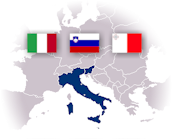
MW
5,867g/mol
Shipment
AMBIENT
Short Term Storage
+4°C
Long Term Storage
+4°C
Shelf Life
Stable for at least 2 years after receipt when stored at +4°C.
Description
Chemical. MW: 5,867g/mol. In recent years several groups have studied the sequence requirements, specificity, signaling pathways and kinetics of the TLR (Toll-like receptor) 9 suppression by inhibitory oligonucleotide motifs, which led to a class of novel inhibitory oligonucleotide (iODNs), that is independent of the previously thought species preference. Subsequently it has been discovered that telomeric DNA repeats (TTAGGG)n can block immune activation by CpG-ODNs. Short, 11-15 base long oligonucleotides were synthesized that were capable of potently inhibiting CpG-stimulation. The optimal inhibitory DNA motif consists of a pyrimidine-rich triplet, preferably CCT, which is positioned 5- to the GGG sequence in a singlestranded DNA molecule. Additionally, both the optimal spacing between the CCT and GGG motifs, as well as their relative order to each other, is of crucial importance for the inhibitory DNA action. Interestingly, although both TLR7/TLR8 ligands and bacterial DNA share the endosomal compartment for receptor binding and signal transduction, certain iODNs (G-type) suppress only TLR9-mediated activation, whereas prototype class I iODN may also interfere with the activation via the TLR7/TLR8 pathway. Recently, intriguing evidence has been presented that for some iODN classes the immuno-modulatory biological activity shows only limited sequence dependency or may not even involve TLR-mediated uptake and signaling pathways. For example iODNs of the class II are thought to act on immune activation through inhibition of STAT signaling and independent of TLR signaling via binding to a yet to be identified 'ODN-receptor'. Slightly modified phosphodiester versions of the most potent inhibitory ODNs were also able to profoundly block the immune activation of macrophages and just recently prove to be valuable tools for in vivo use in experimental animal models of inflammatory and auto-immune diseases. Based upon these recent insights the following classification for iODNs has been suggested: Class I: G-stretch ODNs: TLR9-specific competitors, some iODNs may also affect TLR7 and TLR8 signalingClass II: ODNs with telomeric repeats: TLR-independent inhibitors of STAT signaling (cellular uptake via an 'ODN receptor'?)Class III: Inhibitors of DNA uptake in a sequence independent mannerClass IV: Long phosphorothioate ODNs as direct competitors of TLR9 signaling in a sequence independent manner
ESCLUSIVAMENTE PER USO DI RICERCA (RUO) e non per uso terapeutico o diagnostico su uomini o animali. Il prodotto NON è un Dispositivo Medico o un Diagnostico in Vitro.
PRODUCT FOR RESEARCH USE ONLY (RUO) and not for therapeutic or diagnostic use on humans or animals. The product is NOT a Medical Device or an In-Vitro Diagnostic (IVD).




